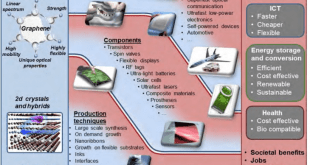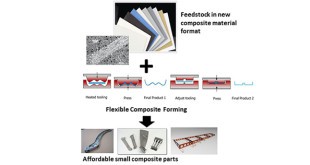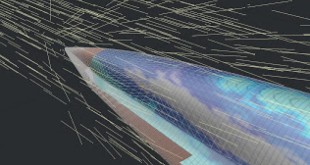Graphene is a 1-atom-thick layer of tightly bonded carbon atoms arranged in a hexagonal lattice. Graphene the world’s first 2D nanomaterial, is widely regarded as the “wonder material” of the 21st century due to the combination of its extraordinary properties. As a single layer of graphite, it is the thinnest …
Read More »Advances in Non Destructive Testing (NDT) and nondestructive evaluation (NDE) techniques for Aerospace and Military application
Non-destructive testing (NDT) is a way to detect and evaluate flaws in materials. The simplest and most accurate way of testing materials and components is often to test them to destruction. Destructive testing is used in aerospace to determine the physical properties of materials, components and assemblies. It can reveal …
Read More »MIlitaries demand 3D-Printing of Nano-structures and Nano-materials or combat 3-D printers that can manufacture sensors to obstacles, and fortifications on Battlefield
Nanomaterials are chemical substances or materials that are manufactured and used at a very small scale. Nanomaterial is defined as a, ‘material with any external dimension in the nanoscale (size range from approximately 1 – 100 nm) or having internal structure or surface structure in the nanoscale’. Nanomaterials are developed …
Read More »DARPA Seeks New Composite Material and Process for Manufacturing Small Parts
After nearly a century of dominance as the material of choice for aircraft, metals are seeing increased competition from composite materials in use on Aircrafts. In the modern age, the aerospace industry is also looking ahead to tougher, lighter, and more heat-resistant materials that would lessen emissions, cut fuel costs, …
Read More »Vulnerabilities in 3D printing could be exploited for Cyber-Physical attacks and Cyber Warfare
3D printing or additive manufacturing is ongoing revolution in manufacturing with its potential to fabricate any complex object and is being utilized from aerospace components to human organs, textiles, metals, buildings and even food. Additive manufacturing, is defined by ASTM International as the process of joining materials together, layer by …
Read More »Printed and flexible electronics (PFE) signal the arrival of future omnipresent intelligent environment
While the conventional electronics like computers and smartphones is built around silicon integrating billions of transistors and is manufactured using complex, costly and wasteful processes in multi-billion dollar foundries . The printed and flexible electronics aim to replace this by “organic” semiconductors which are long chains of thousands of repeating …
Read More »3D printing could be next tool to be exploited by terrorists by printing guns, RAND calls it Disruptive threat
3D printing or additive manufacturing is ongoing revolution in manufacturing with its potential to fabricate any complex object and is being utilized from aerospace components to human organs, textiles, metals, buildings and even food. Additive manufacturing, is defined by ASTM International as the process of joining materials together, layer by …
Read More »Military looking to 4D printing to develop weapons that assemble themselves, last longer and adapt to specific conditions on command.
3D printing or additive manufacturing is ongoing revolution in manufacturing with its potential to fabricate any complex object and is being utilized from printing small components to full drones on Naval vessels, printing replacement parts for fighter aircrafts to printing ammunitions, textiles, metals, human organs, clothing, buildings and even food. …
Read More »DARPA’s MDP program aims for fast materials development for military platforms in extreme environments
Military platforms—such as ships, aircraft and ground vehicles—rely on advanced materials to make them lighter, stronger and more resistant to stress, heat and other harsh environmental conditions. Currently, the process for developing new materials to field in platforms frequently takes more than a decade. This lengthy process often means that …
Read More »3D printing of Nanofibers has enabled power dense batteries, military wearables, chemical and biological defence
A nanofiber is a fiber with a diameter of 100 nanometers or less. The nanofibers due to some special properties are being investigated for a myriad of potential applications in the fields of medicine, electronics and other material sciences. Such fibers have a high ratio of surface area to volume. …
Read More » International Defense Security & Technology Your trusted Source for News, Research and Analysis
International Defense Security & Technology Your trusted Source for News, Research and Analysis










